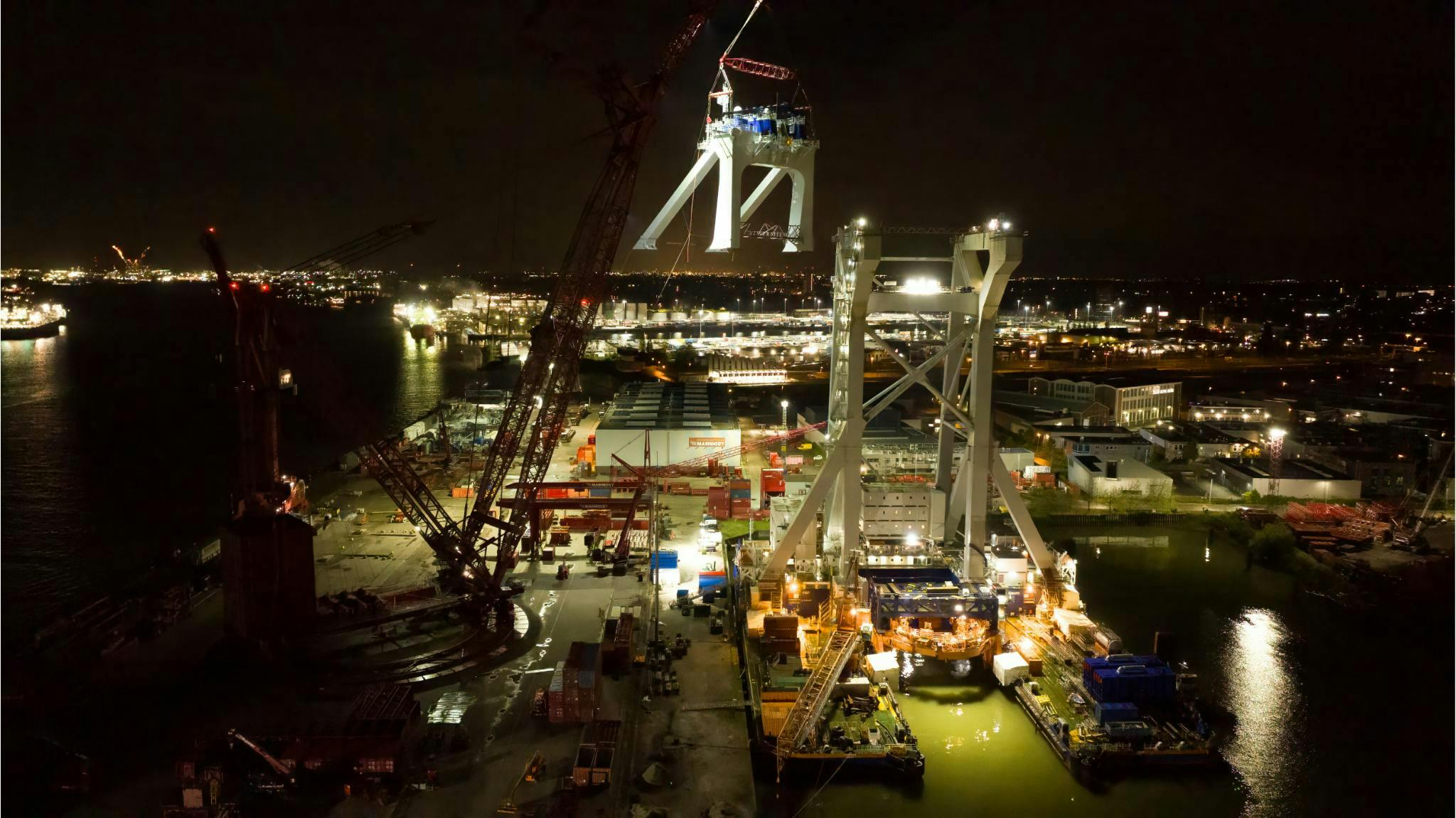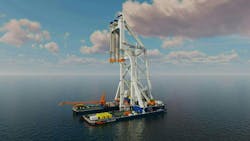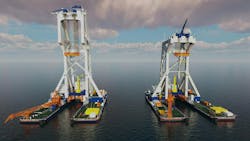Editor's note: This feature first appeared within the 2024 Offshore Wind Special Report and published within the July/August issue of Offshore magazine.
By Jeremy Beckman, Editor, Europe
Construction vessel operators are upgrading their fleets to handle the higher-capacity turbines that are set to dominate future fixed offshore wind developments. Ocean Winds’ 882-MW Moray West project offshore northern Scotland is the first to feature serial installation of Siemens Gamesa (SG) 14-222 DD turbines, each with a capacity of up to 14.7 MW and 108-m-long IntegralBlades. Cadeler’s O-Class jackup vessel Wind Orca has been fitted with a new GustoMSC-designed 1,600-mt lift capacity, fully electric leg crane to install all 60 turbines. First power is due to be generated later this year.
In June, Cadeler signed a contract to install 72 Vestas 15-MW turbines at the Inch Cape wind farm development 15 km from Scotland’s east coast, using two of the company’s newbuild M-Class vessels. Cadeler has commissioned seven new jackup vessels capable of higher-spec installations, including three A-class units, the latest ordered this May from COSCO Heavy Industries in Qidong, China. The A-Class models are designed to be converted relatively swiftly from foundation installation to wind turbine generator installation mode, with a deck space of 5,600 sq m and a payload of more than 17,000 t. Each will be able to transport and erect offshore seven 15-MW turbine sets per load, or six sets of 2XL monopile foundations. Cadeler has signed a long-term lease agreement that guarantees Ørsted access to one of these A-Class vessels from first-quarter 2027 to year-end 2030.
The first of the new P-Class vessels, Wind Peak, was due to arrive this summer, followed by Wind Pace next spring. Both are designed to again offer increased transit capacity to what the company describes as “some of the most difficult sites around the globe,” with a main crane capacity of above 2,500 t. They will be capable of carrying and installing seven 15-MW turbine sets per load, or alternatively five sets of 20MW+ turbines. Others involved in the designs for both the A-Class and P-Class vessels are GustoMSC, NOV, Huisman, Kongsberg and MAN Energy.
For the A-Class Wind Ally jackup, Cadeler has contracted Huisman to supply a storage system that will allow transportation of up to five, 12.5-m diameter monopiles in one trip, with adjustable storage cradles that can be height-adjusted to keep them level with the vessel. For the third of the A-Class vessels, Huisman will provide an upending frame for monopiles ranging from 80 to 120 m long, with a crane automation mode to help maintain the monopile’s position and retainers to secure it during upending.
Upgraded vessel handles T&I in Baltic Sea
In early May, a new A-framed gantry extension weighing 1,200 metric tons was placed on top of the vessel, extending its height to 125 m. Other changes include revamping of the lifting hooks to raise the lifting capacity from 3,000 mt to 4,500 mt; improving the gripper to handle heavier loads; and structural modifications to accommodate the latest hammer sizes for the foundations.
The new, improved vessel, which should by now be operational, will work first on the Baltic Power wind farm 23 km north of the Polish coast in the Baltic Sea, installing the foundations for the 76 x 15-MW Baltic Power wind turbines. Under another contract just awarded by Iberdrola, Svanen will transport and install 21 XL monopiles and transition pieces for the 315-MW Windanker development in the German sector of the Baltic Sea.
Vessels to perform Nordseecluster work
Next year, Van Oord also aims to start commercial operations with its new offshore installation vessel Boreas, which was launched from the Yantai CIMC Raffles shipyard in China in May. It will be the largest vessel of its type, the company says, measuring 175 m long with four x 126-m tall legs, allowing the vessel to be jacked up and work in water depths of up to 175 m. Its crane will have a 155-m high boom, capable of lifting loads of more than 3,000 m. It will be capable of installing the coming generation of 20-MW offshore wind turbines, with its dual-fuel engines designed to switch to run on methanol. Boreas will also feature selective catalytic reduction technology to limit NOx emissions. Its 6,000-kWh battery pack is designed to manage peak loads and regenerate energy to further reduce fuel consumption and emissions.
The vessel’s first project will be the transport and installation of the monopile foundations built by Dajin Offshore for RWE’s 1.6-GW Nordseecluster four-site wind development in the eastern German North Sea, 50 km north of the island of Juist in the German Bight. Installation of the 104 extended monopiles will be performed in two batches during 2025 and 2027.
Oslo-based Havfram will transport and install the same project’s 104 Vestas V236 15-MW wind turbines from 2026 onward using its two new GustoMSC NG20000X-design wind turbine installation jackup vessels, both under construction at CIMC Raffles. These will incorporate hybrid drive train technology said to reduce carbon emissions per installed megawatts of offshore wind capacity. The vessels will be capable of installing offshore wind turbines with a rotor diameter of more than 300 m, and XXL monopiles weighing up to 3,000 t, in water depths of up to 70 m. Capacities have been optimized for a high variable deck load and the extreme lift heights anticipated over the coming decade, Havfram says. The crane lifting capacity on the vessels will be 3,250 t.
New construction vessel takes on installation projects
Seaway7’s newest construction vessel Seaway Ventus has installed its first wind turbine generators for Ørsted’s Gode Wind 3 project, 32 km offshore in the German North Sea. The self-propelled, DP2 jackup vessel, working alongside Cadeler’s Wind Osprey, has been carrying components on each trip for four 11-MW SG 11.0-200 DD turbines, each with a hub height of 126 m and 97-m rotor blades. Seaway Ventus can also install monopile foundations, with the option to switch to power from shore to reduce its operational carbon intensity. It has a telescopic leg encircling crane with a lifting height of 182 m above sea level and a lifting capacity of up to 2,500 t in 65 m of water.







